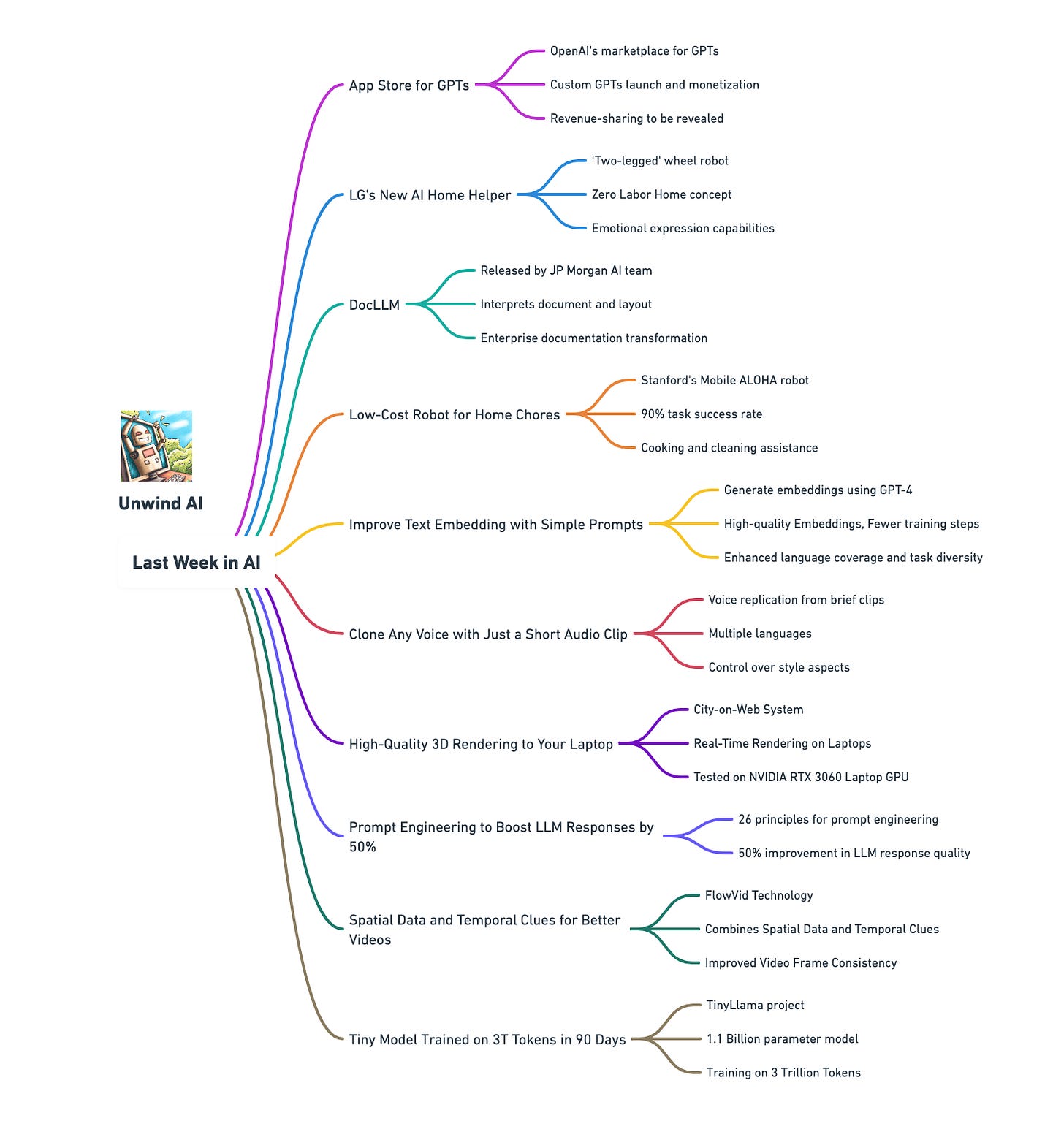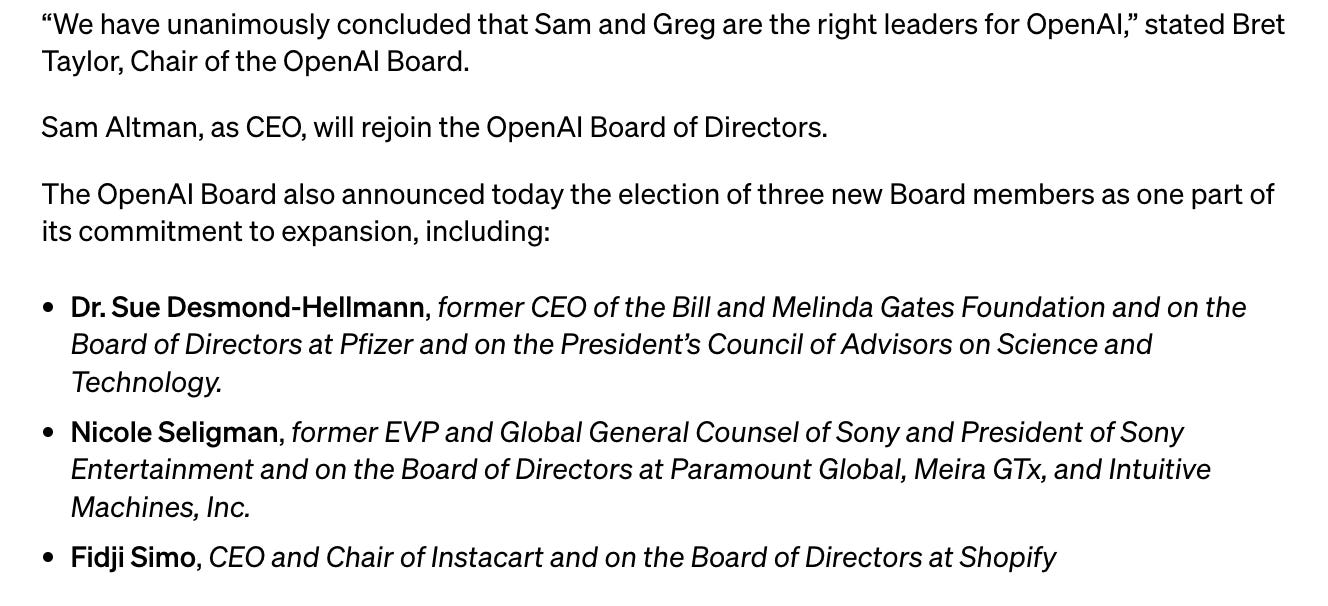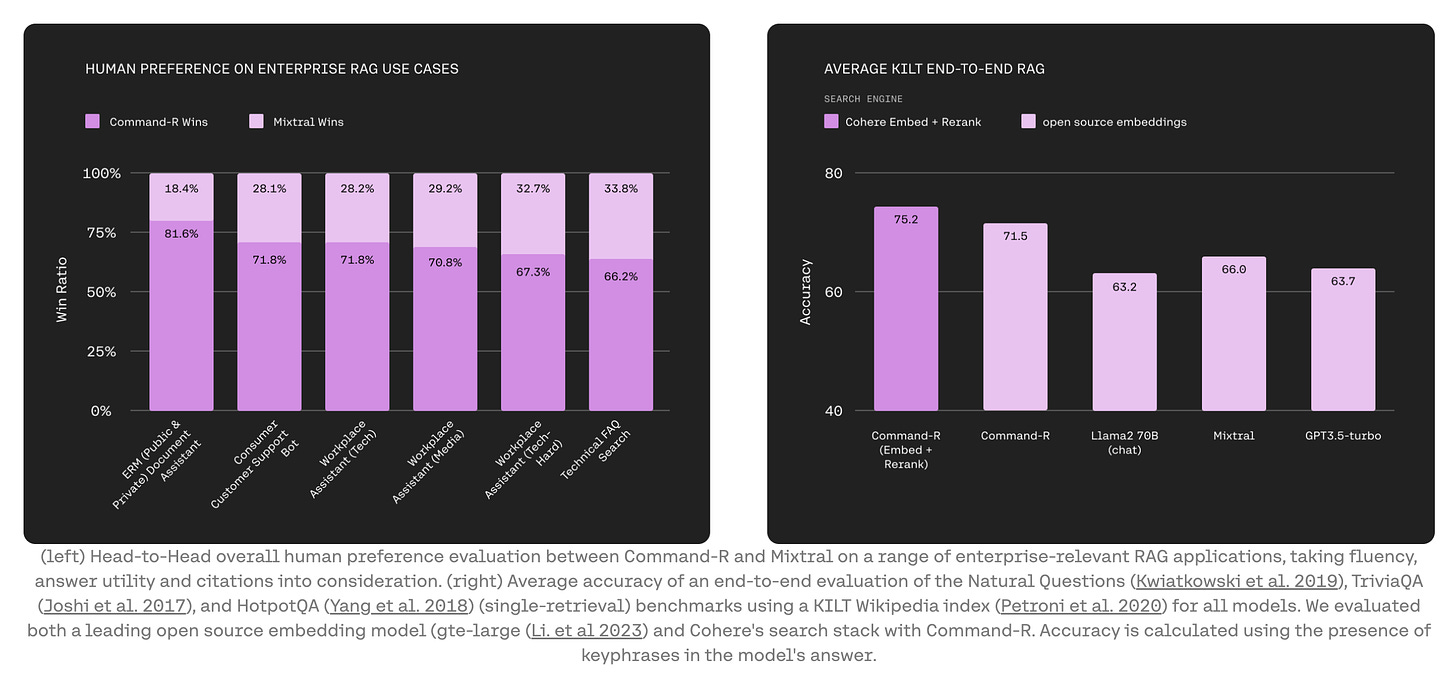
It was yet another thrilling week in the AI field with advancements that further extend the limits of what can be achieved with AI. Here are 10 AI breakthroughs that you can’t afford to miss 🧵👇
Following a brief ousting of CEO Sam Altman in November, OpenAI has welcomed Altman and Greg Brockman back to its board for being the “right leaders”, alongside three new members. OpenAI faced criticism for its previously all-male board and lack of diversity. The newly expanded board and leadership will focus on leading global organizations, navigating complex regulatory environments, and leveraging their experience in technology, nonprofit, and governance.
Also, WilmerHale law firm had investigated Altman’s ouster and concluded that it was due to “a breakdown in the relationship and loss of trust”, not product safety, development pace, finances, or public statements.
The Indian government has embarked on its journey towards supercomputing supremacy by allocating a staggering $1.24 billion to develop a supercomputer with at least 10,000 GPUs under the “IndiaAI Compute Capacity” initiative, focusing on technological self-reliance and making AI accessible to all societal levels.
Additionally, the plan includes:
-
establishing the IndiaAI Innovation Centre to support AI startups and industry projects,
-
enriching public sector datasets through the IndiaAI Datasets Platform, and
-
preparing the next generation with the IndiaAI FutureSkills Program.
This comes in stark contrast to the new advisory that the government issued just last week which requires digital platforms to obtain prior approval before launching any AI product in the country.
A Korean-based company introduced Hyodol, an AI companion doll, at the Mobile World Congress aimed at addressing the loneliness of South Korea’s elderly population. Retailing at $1800, Hyodol goes beyond being a mere technological innovation with its ability to engage in conversation, remind users about their health, and alert caregivers during emergencies through its advanced AI, sensors, and mobile communication capabilities.
Additionally, it features touch, voice reminders, health coaching, and entertainment options. Deployed to over 7,000 seniors and dementia patients in a Gangwon province university hospital, Hyodol has notably reduced depression levels among users.
Elon Musk has announced that xAI will opensource Grok in the coming week. This is shortly after sued OpenAI for deviating from its non-profit mission. Considering the timing of everything, we can’t help but think it to be an afterthought and create a buzz after he faced criticism for the lawsuit.
Devin is the world’s first fully autonomous AI software engineer, designed to work alongside human engineers or independently. This AI engineer evolves and improves over time, much like a human. Not only can Devin execute complex engineering tasks and make thousands of decisions, but it also learns from its mistakes and adapts to new technologies, showcasing an ability to plan, execute, and improve autonomously.
With the highest SWE-bench coding score, Devin has aced engineering interviews at leading AI firms, trained and fine-tuned AI models with minimal input, built and deployed end-to-end applications, and completed actual coding projects on Upwork, all autonomously.
Cohere’s new Command-R is a cutting-edge generative model optimized for long context tasks such as RAG and using external APIs and tools. Designed with enterprise needs in mind, it strikes a balance between efficiency and accuracy. Command-R stands out with its capacity to handle a context window of up to 128k tokens, demonstrating low latency, high throughput, and compatibility with 10 major global languages. Moreover, it integrates seamlessly with Cohere’s Embed and Rerank models for enhanced contextual understanding and optimized information retrieval.
On February 29, 2024, Figure announced a strategic partnership with OpenAI to leverage their generative AI technology for training Figure 01, particularly in processing and reasoning from language. And in just 15 days, they have released a demo which we feel is by far the most impressive one we’ve seen.
You’ll see Figure 01 communicating with the human instructor and carrying out tasks. The robot describes its visual experience, plans future actions, reflects on its memory, and explains why it did what it did verbally. There are no teleoperations, filming speed is 1.0X, all captured in real-time, and the footage is unedited. The cameras in Figure 01 feed into OpenAI’s vision-language model that allows the robot to efficiently process visual information and translate it into seamless actions.
AI in video games has evolved from mastering individual titles to being an AI wingman that does what you tell it to do whichever the game is. Google DeepMind’s SIMA, the Scalable Instructable Multiworld Agent, is capable of navigating and performing tasks in multiple 3D video game environments based on natural language instructions. You could tell SIMA to do tasks like navigating to a specific location, gathering resources, or crafting items and it would carry out those tasks.
SIMA was trained across various gaming environments to understand complex landscapes, interact with objects, and apply physical principles in digital spaces without direct access to game code or APIs. Remarkably, SIMA can generalize its skills to perform well in games it was not specifically trained on.
After extensive debate and lobbying efforts by major AI companies, the European Parliament has passed the AI Act, initially proposed in 2021, with broad support. This groundbreaking legislation introduces a risk-based approach to regulate AI, categorizing systems into four levels: unacceptable, high, limited, and minimal risk, with stringent measures required for high-risk applications in sectors such as employment, credit, and healthcare.
The Act mandates transparency in AI interactions, including chatbot usage and deepfake identification, and bans specific AI applications like real-time biometric surveillance in public areas. Furthermore, it establishes a new European AI Office to oversee compliance and enforcement, while exempting military and defense AI systems.
In an interview with Wall Street Journal, Mira Muratio, CTO of OpenAI, has announced that Sora, OpenAI’s text-to-video model, will be available for public use by this year end, possibly within a few months. OpenAI is further planning to incorporate audio into Sora to bring the videos to life, exactly like Pika’s Sound Effects. They will also enhance the model to allow users to edit the videos generated by Sora.
While AI companies have been sued by a lot of artists for copyright infringement, Murati did not reveal the training data details except that it was publicly available or licensed data and a partnership with Shutterstock to train the model.
That’s all for today 👋
Stay tuned for another week of innovation and discovery as AI continues to evolve at a staggering pace. Don’t miss out on the developments – join us next week for more insights into the AI revolution!
Click on the subscribe button and be part of the future, today!
📣 Spread the Word: Think your friends and colleagues should be in the know? Click the ‘Share’ button and let them join this exciting adventure into the world of AI. Sharing knowledge is the first step towards innovation!
🔗 Stay Connected: Follow us for updates, sneak peeks, and more. Your journey into the future of AI starts here!
Shubham Saboo – Twitter | LinkedIn ⎸ Unwind AI – Twitter | LinkedIn






![Compressed-Fig_2_Sima_1.mp4 [video-to-gif output image] Compressed-Fig_2_Sima_1.mp4 [video-to-gif output image]](https://substackcdn.com/image/fetch/w_1456,c_limit,f_auto,q_auto:good,fl_lossy/https%3A%2F%2Fsubstack-post-media.s3.amazonaws.com%2Fpublic%2Fimages%2Fc628d548-17db-4910-8680-d2039cd73522_600x338.gif)
































































































































































































































































































































































































































































